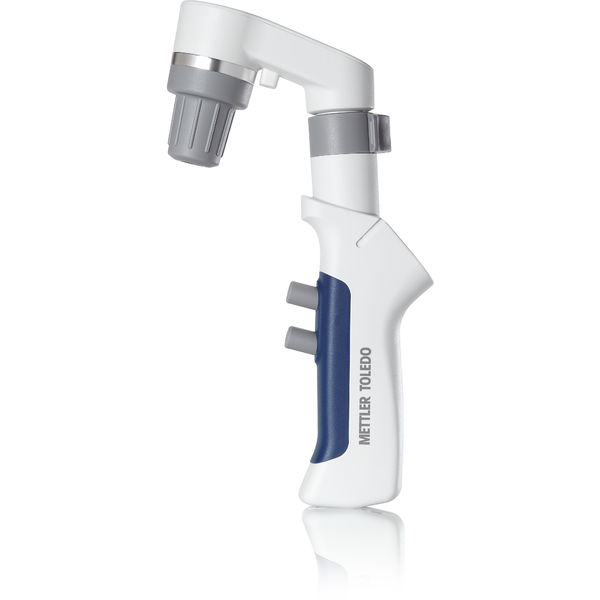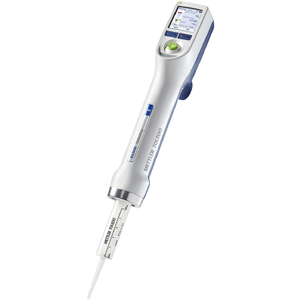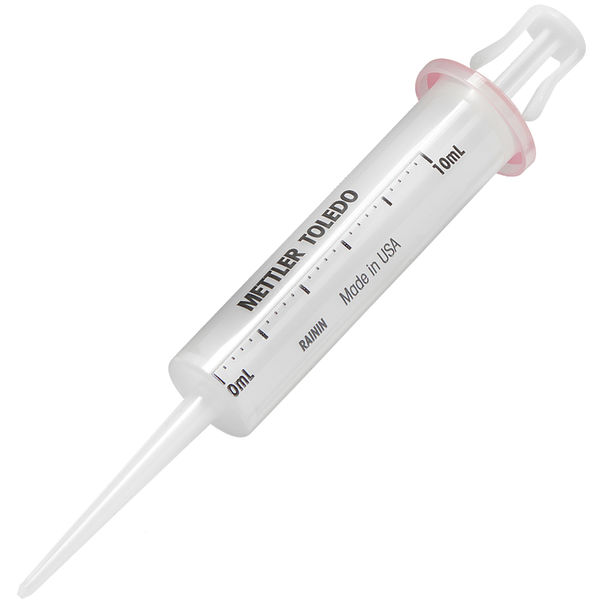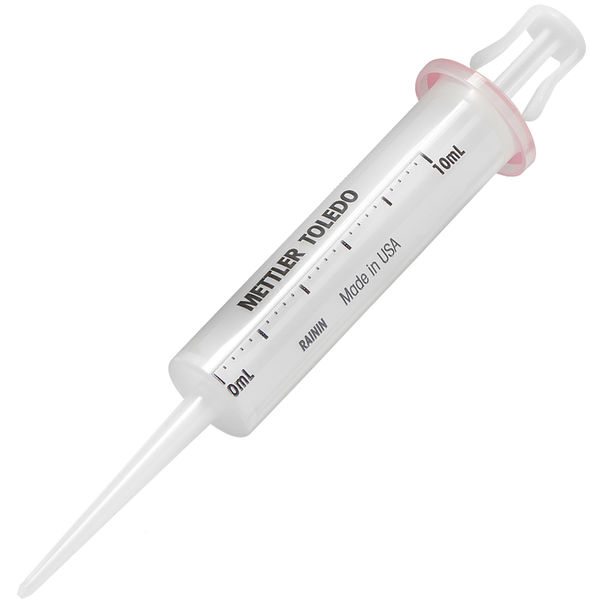
Micropipettes
Microliter Pipetting Options
A micropipette is a pipette capable of dispensing volumes as low as 0.2 microliters. Air-displacement micropipettes, also called air-cushion pipettes, are used in life science and other liquid handling labs to precisely measure and move liquid between any vessels, such as tubes, plates, and gels. Adjustable-volume micropipettes transfer liquid volumes as low as 0.1 microliters up to 5000 microliters.

Pipette Controller SP+
The Rainin SP+™ Pipette Controller, with its unique extendable head for improved ergonomics, samples large volumes (up to 100 mL) and offers the flexibility needed for a wide range of liquid transfer and measurement applications.

Electronic Repeater Pipette NanoRep
Dispense aliquots as low as 100 nL. Increments: 1/10,000th tip size. Full range 100 nL – 50 mL. Up to 1,000 aliquots from one aspiration. No Touch Off™ dispenser. Includes: NanoRep™, 10 mL syringe tip, wall charger, hang-up and Quick Reference Guide.

Syringe Tips NanoRep 0.1 mL Sterile 25/1
Sterile 0.1 mL (100 µL) positive-displacement syringe tips for the Rainin NanoRep™ electronic repeater pipette. Bag of 25.

Syringe Tips NanoRep 0.1 mL 100/1
0.1 mL (100 µL) positive-displacement syringe tips for the Rainin NanoRep™ electronic repeater pipette. Bag of 100.
Eliminate Costs of Inaccuracy - Order Calibration & Service Tailored to Fit Your Pipetting Needs
Eliminate Costs of Inaccuracy - Order Calibration & Service Tailored to Fit Your Pipetting Needs
- Factory Trained/SAC-SINGLAS Certified Technicians
- State-of-the-Art Laboratory
- Network of Global Metrology Experts to Solve Any Issue
- 3 - 5 Days Turnaround Time
- Consumables Replacement

Order Pipette Service & Calibration
Expert Service – Tailored to Fit Your Pipetting Needs
Performance. Maintenance & Optimization
Compliance. Calibration & Quality
Expertise. Training & Consulting
FAQs
What are the different styles of micropipettes?
Pipettes dispensing 1–1,000 µL are often called micropipettes. Different styles of micropipettes are designed to optimize working with certain types of liquids and can maximize productivity and healthy ergonomics. Micropipette styles include air- and positive-displacement manual and electronic pipettes, which can appear in both single- and multichannel formats and benchtop high-throughput platforms. All are designed to precisely aspirate and dispense microliter measurements of liquids.
In both air-displacement and positive-displacement micropipettes, the diameter of the piston and the length of the piston stroke determine the volume of liquid that is aspirated and dispensed.
.jpg/_jcr_content/renditions/cq5dam.web.1280.1280.jpeg)
Why do we use micropipettes?
We use micropipettes to accurately transfer small volumes of liquid from one vessel to another. For example, we use a micropipette to move liquid from a cell culture flask to individual wells in a microwell plate. Micropipettes are used in environmental science, chemistry, pharmaceutical development, forensic science, biology labs, and many other areas.

Which micropipette is the most accurate?
Many micropipettes have very good accuracy specifications. These instruments have the potential to deliver volumes with very low systematic and random error. However, the technique of the micropipette user can greatly affect accuracy. Proper volume-setting, pipette tip pre-rinsing and tip immersion depth, as well as pipetting verticality and pipetting rhythm, can all influence reproducibility.
Micropipettes are precision instruments that often undergo heavy use in the lab, so – in addition to good specs and proper technique – the most accurate micropipette is one that is regularly calibrated. Service intervals typically reflect the amount a micropipette is used.
How do I use a micropipette?
To use a micropipette, first set and lock the volume. Next, lower the liquid-end of the micropipette into a clean, empty pipette tip. Make sure the pipette tip is securely mounted to the micropipette for an airtight seal. Once a pipette tip is loaded, on a manual micropipette, press the plunger down to the first stop. On electronic models, once volume is set and a tip is loaded, it’s ready to aspirate.
Holding the micropipette vertically, immerse the tip into the liquid at the proper depth for the tip size. Immersing a tip too deeply increases pressure and may overfill the tip; immersing it too shallowly risks the aspiration of air.
On a manual micropipette, slowly release pressure on the plunger to aspirate the set volume of liquid. On an electronic version, press the button to aspirate.
With liquid inside the tip, move the micropipette over the target vessel. On manual micropipettes, press the plunger to the first stop to dispense. On an electronic micropipette, simply press the dispense button.
Finally, to clear any remaining liquid, move the micropipette over a desired discard vessel and, on manual micropipettes, press the plunger to the second “blowout” stop. On electronic micropipettes use the button to blow out any residual liquid.









